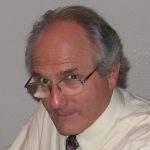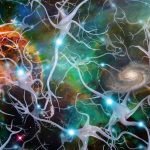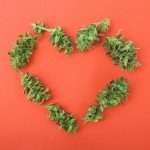Notes from the Field: December, 2020
JARED L. ZEFF, ND, VNMI, LAC
The following is not an article prepared for a medical journal. Not every statement of fact is cited or referenced. This is a commentary on the medicine, a running set of observations about practice in the field. It’s not meant to be a peer-reviewed presentation; rather, these are notes and thoughts from a practicing naturopathic physician, a primary care doc in general practice.
Science & Naturopathic Medicine
I have been thinking a lot lately about science. I think of medicine not as a science, but as an art informed by science. Conventional medicine, and many in our little profession, understand the best medicine as “evidence-based.” “Science” is the primary source of evidence in evidence-based medicine. There is a hierarchy to evidence. I would say that this ranges from anecdotal evidence, personal clinical experience, and the agreement of colleagues, to small studies, larger studies, and meta-analyses. But there is also tradition, and medicine is rich with it. Personal experience is also evidence, though weaker than that of a large study that is appropriately controlled and analyzed, and the subjects of which are properly selected, and the question being explored or tested is properly framed, etc. There are sources of evidence that are more trusted, such as the Cochrane Library and the New England Journal of Medicine. We have also learned over the past decade, and longer, that there is significant fraud in science, as well as many sources of error, such as selection bias in the publication of journal articles.
It is simply no longer possible to believe much of the clinical research that is published, or to rely on the judgement of trusted physicians or authoritative medical guidelines. I take no pleasure in this conclusion, which I reached slowly and reluctantly over my two decades as an editor of The New England Journal of Medicine. (Marcia Angell, MD, former Editor-in-Chief at the New England Journal of Medicine)
This quote by Dr Angell is from her article in the New York Review of Books titled, “Drug Companies and Doctors; a Story of Corruption,”1 which details significant and various ways that published research is manipulated such that it cannot be trusted. But this is the basis of “evidence” in evidence-based medicine, the medicine touted as “science-based.” What does this leave us, and where does it lead us?
This is my 42nd year of practicing naturopathic medicine. I began at a time when things were different. The profession was fractionated. There were no journals that catered to us or even to “functional medicine.” The only journals that came close were in the field of homeopathy; the National Center published a good journal. And there were some journals of clinical nutrition. But if I wanted to know what worked, I contacted an older doctor who could advise me. In my early days in practice, I made many phone calls to John Bastyr, Bill Turska, Harold Dick, Ravi Sahni, Robert Broadwell, and a few others. To me, the gold standard of evidence in naturopathic medicine was the experience of my elders. I trusted them and their advice, and mostly because it worked; I could rely upon it.
A Brief History of Medicine
Reliability and understanding have been the goal of medicine forever. In the pre-scientific age, there were physicians, of course; I think that medicine, or healing, is one of the very oldest of human endeavors. The history of medicine is the story of the quest for understanding why people become ill and how to relieve and reverse illness: What works? What is reliable? To a great extent, this quest is directed by one’s understanding of reality. If one supposes that illness is caused by evil spirits, then the quest becomes one of understanding the spiritual world and how to protect oneself and remove the influence of the evil spirit. The physician then becomes the shaman. One’s understanding of cause becomes the guide for determining the solution.
For much of history, the cause of illness was considered to be an imbalance among the various elements that make up the person. This is true in ancient Chinese medicine, Indian medicine, Persian medicine, Greek, Roman, and European medicine. In the Greek tradition, which became the Roman and European, an imbalance in the elements and humors was posited as causative, and this ruled for nearly 2000 years, from around 500 BCE to around 1500 CE. The 4 elements – earth, fire, air, and water – were thought to compose all matter. The 4 humors – blood, phlegm, yellow bile, and black bile – were the fluids and elements of life. The elements of matter and the elements of life must be in balance to produce health, and an imbalance caused illness.
There were other theories, such as the Hippocratic. But this Aristotelian model of elements and humors predominated until the Hippocratic was rediscovered, around 1500 CE. Even with what we might consider to be a fundamentally wrong theory guiding them, physicians did help. Some things they did quite well. They set bones. They treated a number of illnesses with the medicines available and did some good. Even in ancient times, they did trephining, a form of brain surgery in which the skull was opened to relieve the pressure of a hematoma from concussion. We know these operations were successful because there are many skulls that show healing of the tissues after such surgeries. Much of medicine is based upon experience, the repetition of what has worked in the past.
Beginning around 1500 CE, in Europe, a new method began to develop, which we call “science.” Hippocratic writings were reintroduced in the West, and a medicine divorced from humoral theory and based upon observation was seen from an ancient authoritative source. Thinking began to open and challenge the orthodoxy that had ruled for centuries. By the 1600s, Harvey wrote with accuracy about the circulation, and the microscope was introduced, and the scientific revolution began. Newton published his Philosophiae Naturalis Principia Mathematica in 1687, considered by many to be the most significant book in modern science, and the scientific basis of knowledge was firmly established. Medicine now had a new system for generating reliability and understanding.
In the early 1800s, Pierre Louis, the French physician and scientist, began the examination of medical evidence with statistical analysis. In 1816, Francois Magendie published Elements of Physiology, the first modern textbook of physiology. In 1848, Rudolph Virchow, MD, published Cellular Pathology. In 1865, Claude Bernard published An Introduction to the Study of Experimental Medicine. These 3 texts established the scientific basis of modern medical practice. The discovery of penicillin in 1928 launched the modern age of miracle medicine, which firmly established the conventional medical profession as the standard and dominant profession in medicine, with their new-found ability to cure lethal infections.
Modern science becomes the defining and definitive force in medicine. Evidence and reliability are based now upon dispassionate observation and analysis. And this is what I learned in naturopathic medical school.
The Philosophy is a Constant
As I continued to practice and build my own experience, I rediscovered naturopathic philosophy, our clinical theory. What I have found during my 40+ years of practice is that the philosophy is true, it never changes (built upon natural law), and it is a reliable source of clinical guidance. What we may call science-based evidence tends to change constantly. We see this in the practice of conventional medicine. Things that were used in practice 10 years ago are now “outdated,” and many things that were relied upon 20 years ago and 30 years ago have been discarded and forgotten. There are various reasons for this, which could be a different discussion. But the philosophy that guides naturopathic practice never changes. I still use the same things I used 40 years ago – the hydrotherapy, the same botanicals and homeopathics, the dietary basis of healing (which Hippocrates spoke about). They still work. They still get my patients well. They worked 100 years ago and will work 100 years from now. I have added new things and continue to look for new ideas and techniques and medicines. But the basics and the foundation do not change.
I have often said the following, or something like it when teaching: You could take a knowledgeable naturopathic doctor, drop them naked pretty much anywhere on earth, and they could be practicing effectively in a very short time. They would find in their surrounding environment most of what they would need to improve the health of their patients and treat their diseases. Water, food, botanicals, earth: in these are our medicines, if you know how to use them. If you understand the principles of health and healing, you can apply these simple and available things in a variety of ways to accomplish the easing of pain and the treatment of disease. Certainly, I like the comfort of my office, my botanical and homeopathic medicinary, the various pieces of equipment that make examination and treatment easier. But I can accomplish much with just my hands, wild plants, water and earth, and my knowledge and experience of the processes of healing and of illness. The process of healing and the philosophy that articulates and explains it have always been the same. I know I can rely upon it.
I have practiced in rough field conditions. For many years, I set up and ran first-aid stations at various Native American ceremonies, deep in the hills or forests or desert. Often, I would spend my time walking around, outside the camps, looking for and harvesting the medicines I would need, beyond what I might have brought with me. I would treat everything from acute infections to heat exhaustion to kidney disease with these simple medicines at hand, along with hydrotherapy and similar techniques. These medicines have always worked and always will.
And if you understand why people become ill and how to reverse this, healing is generally available (refer to Lindlahr and Hahnemann).
Science: A Double-Edged Sword
Science is the observation of phenomena, the search for patterns or logic within the observations, the testing of one’s assumptions regarding these observations, and the application of one’s conclusions in the real world. It is based upon a natural openness and a natural skepticism. It is also the accumulation of these observations over time. If someone tells me that “the science is settled,” unless one is referring to gravity or Newton’s Laws, the natural skeptic in me wants to challenge that and test it out.
When I was hearing that we are in the throes of catastrophic anthropomorphic climate change that will destroy our societies in a few years, the first place I went to was old climatologists, those at the end of distinguished careers, and I read what they had to say about it. In general, they pointed out the flaws in these assumptions. Their careers were already made, or they were retired, so they had little to lose and could be perfectly honest. They did not need new grants, so they had little concern about pleasing those in control of the money. I examined graphs of climate change over the past million years, demonstrating a number of warming and cooling periods, including ice ages. We emerged from the past ice age about 10 000 years ago, and are in a similar warming cycle that has occurred several times over the past million years, none of which were driven by the human creation of CO2 by burning fossil fuels. It is not warmer now than it was in the past warming cycles. And it was warmer about 1000 years ago, during what was called the Roman Warming period, than it is now. And humans thrived during this Roman Warming: less disease and more food. So, I am skeptical of the claims of catastrophic anthropogenic global warming. This does not relieve me of the responsibility to steward the earth’s resources and monitor my own “footprint”; as a naturopath, I must respect and care for nature. But it relieves me of an unfounded existential fear that seems to plague many young people today, and it reminds me to keep an open mind in the face of popular science and the politics surrounding it.
I apply this same skepticism to my own work and to what I hear and read regarding medicine. Why did the recommended levels of cholesterol suddenly drop to “200” about 30 years ago? This was the work of a committee of doctors, self-appointed, several of whom were receiving significant financial support from the pharmaceutical company that held the patent for the first statin drug (see John Abramson, MD’s book, Overdosed America2). On what basis did they make this recommendation that we all take for granted? When I was first confronted with apparently vaccine-injured children in my early practice, which I doubted at first, I began to seek the safety studies that I expected from the CDC or FDA. What I found was that such research was not being funded. I could not find significant safety studies. I found instead that vaccine manufacturers were exempt by law from liability. I became more skeptical. Where is the science, and what is its basis?
Science has given us the greatest progress in medicine in the history of humankind. But it is also corruptible. As John Bastyr taught us, we should follow the science, and use it as a guide. But the philosophy of our medicine is not corruptible. It is constant. It is based upon the observations of nature. It is a better guide.
Respectfully,
Jared L. Zeff, ND, VNMI, LAc
References:
- Angell M. Drug Companies & Doctors: A Story of Corruption. The New York Review of Books. 2009;56(1). Available at: http://www.fondazionedibella.org/cms-web/upl/doc/Documenti-inseriti-dal-2-11-2007/Truth%20About%20The%20Drug%20Companies.pdf. Accessed March 25, 2021.
- Abramson J. Overdosed America: The Broken Promise of American Medicine. New York, NY: Harper Perennial; 2008.

Jared L. Zeff, ND, VNMI, LAc is a licensed doctor of naturopathic medicine and a licensed acupuncturist. In addition to functioning as Medical Director at the Salmon Creek Naturopathic Clinic in Vancouver, WA, Dr Zeff taught on the faculty at National University of Natural Medicine in Portland, OR, where he was also Dean from 1988 to 1993, and holds a professorship in Naturopathic Medicine. Dr Zeff is a graduate of the University of California, NCNM, and the Emperor’s College of Traditional Oriental Medicine. He, along with Pamela Snider, is the author of the AANP’s Definition of Naturopathic Medicine, and the Therapeutic Order concept.










